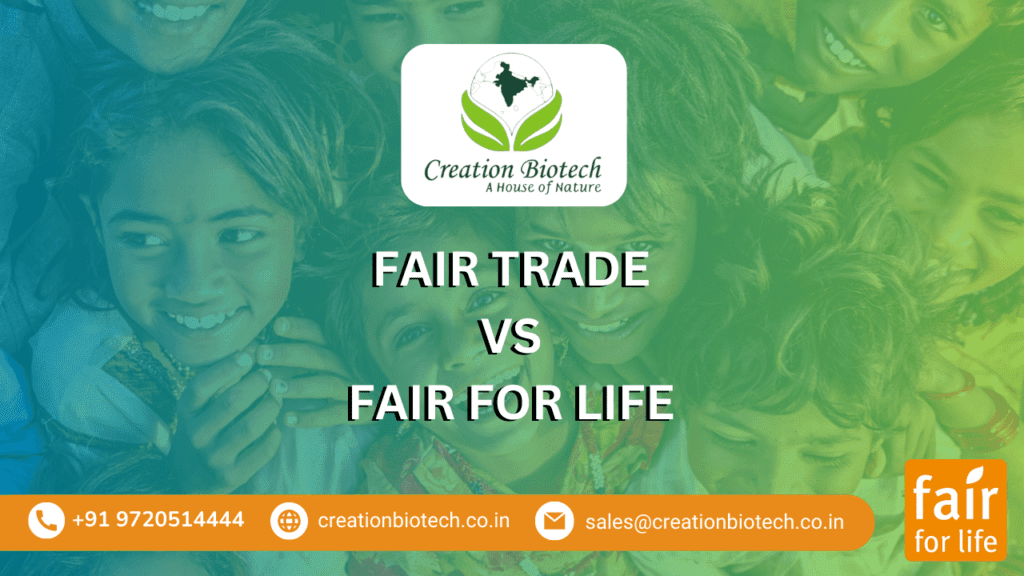Fair Trade and Fair for Life certifications have gained significant attention in recent years due to their commitment to promoting social responsibility and fair practices. While both certifications aim to ensure ethical sourcing and support sustainable development, they differ in their specific criteria and standards. In this article, we will delve into the nuances of Fair Trade and Fair for Life certifications, exploring their origins, key principles, certification processes, and the impact they have on various industries. By understanding the differences between these certifications, consumers, and businesses can make informed choices and contribute to a fairer and more sustainable global marketplace.
Fair Trade Certification
Origins and Principles: Provide a brief overview of the history and principles of fair trade. Explain its focus on empowering small-scale farmers and artisans, ensuring fair prices, promoting community development, and prohibiting child labor and exploitative practices.
Certification Process: Describe the certification process for fair trade, including the role of Fairtrade International and its partner organizations. Discuss the standards and criteria that products must meet to receive fair trade certification, such as fair prices, fair labor conditions, and environmental sustainability.
Impact and Benefits: Highlight the positive impacts of fair trade certification, such as improved livelihoods for farmers, access to fair markets, investments in community projects, and enhanced environmental practices. Cite examples of fair trade success stories in different industries.
Fair for Life Certification
Origins and Principles: Introduce the Fair for Life certification and its key principles, emphasizing its focus on fair wages, safe working conditions, and responsible production processes. Discuss how Fair for Life goes beyond fair trade by addressing social responsibility in various industries, including food, cosmetics, and textiles.
Certification Process: Explain the certification process for Fair for Life, including the involvement of the Institute for Market Ecology (IMO) and its auditing procedures. Discuss the specific criteria and standards that products must meet to obtain Fair for Life certification, such as fair labor practices, community engagement, and traceability.
Impact and Benefits: Discuss the positive impacts of Fair for Life certification, such as fair wages for workers, support for small-scale producers, and environmental sustainability. Provide examples of companies and products that have received Fair for Life certification and the transformative changes they have brought about.


Comparison and Distinctions
Standards and Criteria: Compare and contrast the standards and criteria of fair trade and Fair for Life certifications. Highlight the similarities in their commitment to fair practices and emphasize the unique aspects of each certification, such as Fair for Life’s focus on social responsibility across multiple industries.
Scope and Industries: Discuss the scope and industries covered by Fair Trade and Fair for Life certifications. Explain how fair trade primarily focuses on agriculture and handmade goods, while Fair for Life extends its reach to encompass food, cosmetics, and textiles.
Also Read- Women’s empowerment and leadership
Consumer Awareness and Labeling: Address the issue of consumer awareness and labeling for fair trade and Fair for Life products. Discuss the importance of transparent labeling and the role of certification logos in helping consumers make informed choices.
Conclusion: Fair Trade and Fair for Life certifications are instrumental in promoting ethical and sustainable practices in the global marketplace. While fair trade has a long-established presence, Fair for Life has expanded the scope of social responsibility across various industries. By understanding the distinctions between these certifications, consumers can support producers and workers who adhere to fair and sustainable practices. Furthermore, businesses can align themselves with these certifications to demonstrate their commitment to social responsibility. Together, fair trade and Fair for Life contribute to a more equitable and sustainable world,


